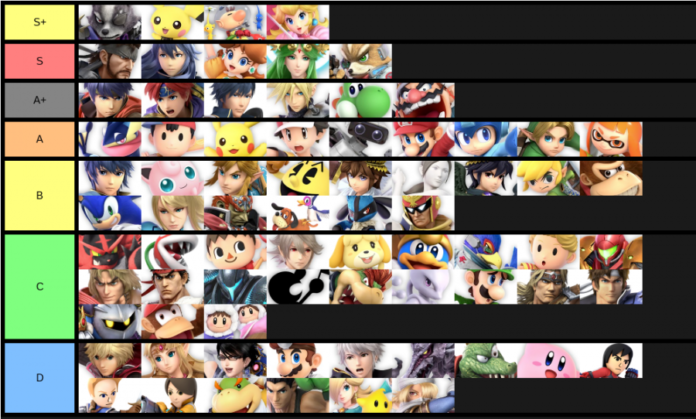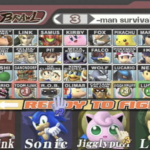Tier lists in competitive gaming are a ranking system that groups characters in a particular game based on their viability in tournament-level play. They are commonly seen and referenced in fighting games, MOBAs, hero shooters and more.
There are a few ways that a tier list can be decided for a particular game. Let’s examine some of these methods, as well as how tier lists are viewed within the video game community.
How Are Tier Lists Decided In Video Games?
Theorycrafting/General Consensus
A large portion of the discussion when it comes to a tier list is the general consensus among the competitive community, as well as theories/hypotheticals about how certain characters could do in certain situations, or when the meta eventually reaches a certain point.
This method allows for a broad scope of input, which can include tournament results, friendlies/sparring, matchup discussions, theorycrafting about the potential of certain characters versus others, and just about anything that takes into account the current version of the game in question.
This broader style of analysis allows for tier lists to be more fluid than trying to establish a list using some sort of hard data set; it lets the intangibles have an effect on the discussion. The downside to this kind of tier list method is that everyone weighs the variables (tournament results, character potential, matchups, etc.) differently, meaning that a comprehensive list with unanimous consent is next to impossible.
Tournament Results
Tournament results are a prime foundation for deciding and ordering a tier list because it provides a concrete data set for a list to be based on. The discussion about character potential and theories of viability are sidelined in favor of how characters actually perform in tournaments.
The upside to this method is that it can provide a lot of data showing which characters are actually being used in competitive play, and how they perform relative to other characters. An aggregate of tournament results can at the very least be a great starting ground for where characters will tend to land on a tier list.
The downside to this approach is dealing with variables that can skew a purely tournament result-based tier list. Examples of these would be:
- Character saturation. If one character’s usage is taking up a huge portion of the playerbase, but players who use this character tend to never place at the very top or the very bottom, is the character’s viability being bloated by the sheer volume?
- How to weigh different tournament results. Clearly a major tournament with international talent should weigh more than a local event, but that raises the question of how to properly weigh these characters’ results, as well as the tournaments of varying size in between? More tournaments means more data, but properly weighing these for the aggregate would be very difficult.
- Player exceptionalism. Sometimes a certain player will perform exceptionally well in tournaments, and a purely result-based algorithm won’t be able to differentiate between the character’s supposed dominance and what is more likely to be stellar play from an individual. An example of this would be when Hungrybox was clearly the best Super Smash Bros. Melee in the world with Jigglypuff, but nearly everyone would agree that Fox was the best character in competitive Melee.
Vote-Based Tier Lists
Similar to a general consensus/theory-based tier list, a vote-based tier lists allows for tournament results as well as the intangibles such as character potential, and leaves the results to people who vote for characters’ respective placements on the tier lists. The average will then be calculated and a tier list will be formed.
The benefit to this method of tier list is that it provides a snapshot tier list for that particular moment in a game’s meta. With enough good-faith voters, you can really get a good look of what a game’s community thought about the tier list in that moment of the game’s lifespan.
The downside is, of course, getting not only a number of good-faith voters, but also making sure the sample size is solid; too broad a base and you risk having too many votes that don’t have enough knowledge of the game. The flip side is making sure you don’t get too granular; if you only get votes from a character-specific Discord server, you’re going to get a very skewed view of that character and the surrounding matchups.
Sites like TierMaker have helped spur more and more discussions around tier lists as people make their own. Whether a person prioritizes tournament results, character potential or discussions surrounding the evolving meta and matchups, all tier lists offer a subjective, yet valuable look at the landscape of a particular game.
How Are Tier Lists Viewed In The Gaming Community?
In the truly early days of competitive gaming, there was a fairly noticeable amount of players who shunned the existence of tiers entirely; this has mostly faded away. It’s accepted that the notions of tiers exist. Most of the discussion surrounding tier lists is how many tiers should a certain game have, and where exactly do characters place on the list relative to others?
An important distinction is that while the concept of tiers is legitimate, rarely is a tier list set in stone. Patch updates, new strategies being developed and new characters being added to the game all can have huge impacts on how a tier list can change over the years.
Oftentimes a low-tiered character can cause a big upset in a tournament or perform exceptionally well, and this is used to either raise that character’s position in a tier list, or try to delegitimize the concept of tiers entirely. It’s important to recognize that characters on the lower end of the tier list tend to be used less as time goes on, which can lead to matchup inexperience; this is often how an upset featuring a low tiered character comes about. One of two things can happen; either the character will get more results and more representation, and then rightfully move up the tier list, or the upset will have been a one-off and the character will continue around where they’re at.
Individual tier lists are subjective, and always a product of their time. A good tier list will look at tournament results, take into account a character’s potential, and analyze how characters match up against each other in the current meta. How each variable is weighed will always depend on who’s making the tier list, but having as much current information on the meta as possible will always lead to a more strongly curated tier list.











